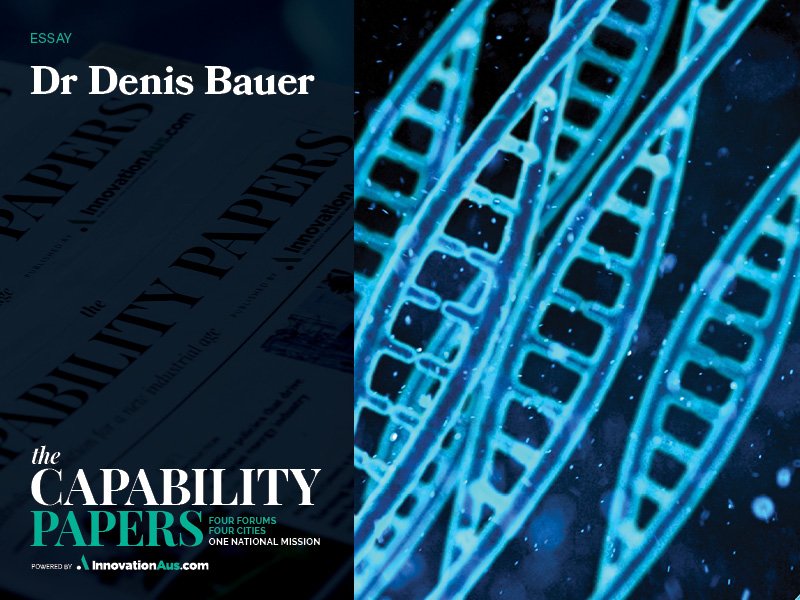The Organisation for Economic Cooperation and Development (OECD) has ranked Australia 23rd in its list of innovative countries, but also shows that despite our secure and stable political environment and strong tertiary education sector, these innovations are not translated to innovation outputs.
While there are reasons that contribute to Australian intellectual property (IP) stalling, including geographical isolation, a lack of venture or angel investors and the expense of distributing to overseas markets, Australia also has an exciting competitive advantage in the innovation ecosystem, particularly in the technology space.
One area where Australia has vast opportunities for global impact is digital health.

There are three key areas of competitive advantage for Australia in the digital health space: interoperability, harnessing emerging distribution channels and embracing miro-commercialisation. An example where CSIRO is adding value to the digital space is also included for each area, including gaps and areas for improvement.
To access global markets Australian innovation needs to rise above global offerings. This will become less about one brilliant idea hatched by looking at the fine detail of a distinct problem, and more about listening to market developments, collaborating, and adapting to change.
In other words, those who are connected and in tune with the contextually based needs of their work will be the ones who survive and thrive in the brave new world of global bio and medtech advancements.
For example, CSIRO’s Ontoserver is a next-gen Fast Healthcare Interoperability Resources (FHIR) clinical terminology server. The tool has been adopted by digital health systems around the world, including Indonesia, the Netherlands and the UK.
It was developed iteratively over 15 years by listening to the industry requirements and working in close collaboration with the innovators of a newly emerging standard FHIR.
Ontoserver has now established an ecosystem of terminology capability, enabling syndication of terminology resources from the national service, and removing several technical barriers to the adoption of standardised clinical terminology. The result is a more connected health system that reduces clinician and patient burden.
But even the most optimally suited product can lose steam on the ‘last mile’ towards the customer. Why? Because of the 80:20 rule: 80 per cent of the digital product can be created in 20 per cent of the time, but to go the ‘last mile’, innovators must learn fundamentally new skills (licencing, marketing, cybersecurity) that would take up 80 per cent of their time.
Leveraging existing deployment channels, such as mobile app technology, can streamline the approach and get a product into the hands of customers quicker.
While apps provide access to end users, the high value transactions are through companies doing business with each other. If data is the new oil, then analysis platforms are the new oil rigs.
Building high-performing rigs that can process billions of datapoints to provide real-time actionable insights to business customers requires heavily scalable compute resources, as delivered by public cloud providers.
Like apps, public cloud providers do the heavy lifting of marketing, cybersecurity, and offering a shop front where customers can find the right solution but do so for the compute resources needed to process business rather than end-user scale datasets.
CSIRO’s VariantSpark is a machine learning platform able to analyse the genomes of millions of individuals to discover new disease genes, enabling the identification of disease mutations and their subsequent clinical responses.
VariantSpark is available on Amazon Web Services and Microsoft Azure marketplaces, exposing it to the US$28.09 billion (2022) global genomics market. For example, VariantSpark was recently used to identify novel disease genes for cardiovascular diseases and Alzheimer’s as well as identifying COVID-19 viral mutation that influence the disease outcome for humans.
Despite individual success stories, the road towards routinely exporting digital innovation products is long and requires more supporting services, like education, incubators and investors.
As an Innovation sector we need to adopt an economy of scale where we solve the undifferentiated recurring issues (tax, legal, revenue, regulations, accreditations) for innovators through central services, freeing entrepreneurs up to focus on the core value proposition.
We also need to encourage a fast-fail mindset where innovation products are exposed early to verify market fit. Akin to micro-loans, micro-commercialisation seeks to rapidly commercialise IP items that might be too small for a spinout company or too encumbered for licencing agreements.
Such IP is typically published in academic journals and not actioned further. Making this innovation accessible through public cloud marketplaces can generate passive revenue streams and accelerate innovation by building on each other’s work.
In summary, Australia’s ability to build a strong digital export market depends on our willingness to adopt change and move fast to secure a competitive position in the global digital economy early.
Dr Denis Bauer is a government research scientist, adjunct professor at Macquarie University and an AWS Hero. Her approach of joining cloud computing with deep biological domain knowledge translates research into impactful products that have been used for disease gene detection in Motor Neuron Disease and the COVID-19 vaccine development. She contributes to open source software projects and advisory committees, as well as keynotes international IT and medical conferences. Dr Bauer was recognised in the Brilliant Women in Digital Health 2021 and Women in AI 2022 awards. She has attracted more than $41m in funding to further life-science research and digital health.
Do you know more? Contact James Riley via Email.

